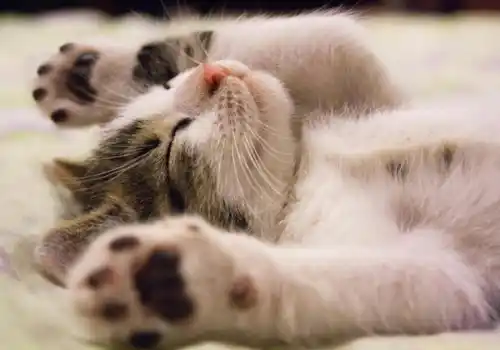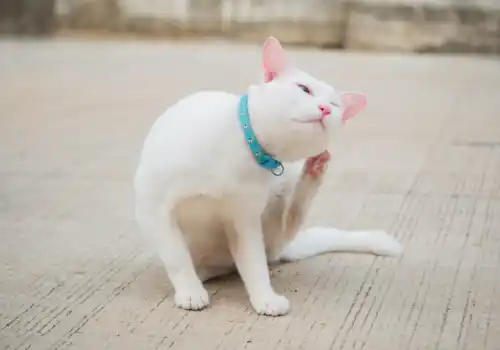Do you want to help care for wild birds but are worried your cat, or a neighbours cat might harm them? Here's our top tips for wildlife-loving cat owners who want to feed garden birds without risk from pets.
Feeding birds can help them through tough times of the year when other food is scarce, but for cat owners there is the fear that it's too risky to attract them. What can we do to tip the balance in favour of garden birds?
It might come as a surprise to some but most cat owners are also bird lovers. To own and love a pet is to have a deep affection and fascination for animals, and so a broader appreciation of nature is to be expected.
It's hard to imagine a cat owner who would not be bothered if their pet killed a robin or blackbird; just as it's hard to envisage a bird lover not being troubled if they saw a cat struck by a car. So, while the debate about cats and their impact on birds is often highly polarised, there is considerable shared ground between both sides, and it is here where sustainable solutions need to be sought.
Top bird care tips for cat owners:
- Garden birds that feed mainly on the ground, such as robins and dunnocks, are particularly vulnerable to cats. Skulking in a nearby bush, a cat can ambush these birds if they come too close. A simple step to prevent this is to avoid providing food at ground-level close to vegetation in which a cat might lurk. Ideally, position such offerings at least three metres away from cover, and place some prickly vegetation under potential cat hiding places.
- If ground feeding proves just too risky, focus instead on using hanging or pole-mounted feeders and a bird table that stands at least 1.5 metres tall. Unlike food provided on the ground, such feeding options are best positioned close to cover, since other predators (e.g. sparrowhawk) might pose more of a risk to visiting birds than a cat.
- Place prickly vegetation around the base of any feeders and use squirrel baffles (essentially upturned plastic bowls) on feeder/bird table poles to prevent cats from shimmying up. Remember that food provided from hanging feeders can drop to the ground and will attract birds, so purchase or fashion some kind of tray to catch these discards.
- By flocking together many of our feathered friends enjoy improved vigilance. A flock of birds is more likely to spot danger than any one individual; by listening and watching each other as they busy themselves in gardens, each bird has a better chance of staying safe. With this in mind, space out the food that you provide in your garden. This will help to avoid a superabundance of birds in any one place - which is also good for hygiene reasons - and will promote more effective group vigilance.
- Place nest boxes where cats cannot easily reach or sit near them. Also consider planting thorny vegetation (e.g. hawthorn and pyracantha species) in your garden. Once mature, this will help blackbirds, dunnocks and many other birds to find safer nesting spots, while hawthorn and pyracantha also provide fruit for birds over autumn and winter.
- Young birds - both chicks and recently fledged - are especially vulnerable to cats. During spring and summer, consider restricting the time that your cat spends outside. Not only can cats kill young birds but their mere presence has been shown to reduce nesting success. Research shows that blackbirds provide less food for their young when a cat is present and, by defending the nest, parents can attract other predators, such as members of the crow family. Restricting or supervising the time that your cat spends outdoors during spring and summer could well give your garden birds a boost. Cats appear to take most birds around dawn and dusk.
- Birds use some areas of a garden (e.g. around feeders or nest sites) more than others. Try to deter cats from visiting these areas. For example, sonic deterrents that are triggered when a cat passes in front of them can be useful. You might also wish to try scent deterrents, such as citronella. Bells fitted to cat collars could give birds an early warning that a cat is around, and have been shown to reduce the number of small mammals taken. You could also look into using a sonic-deterrent collar. (Note that any collar should have a quick release mechanism so that a cat can free himself if the collar gets snagged.)
Advice from the British Trust for Ornithology (BTO).








